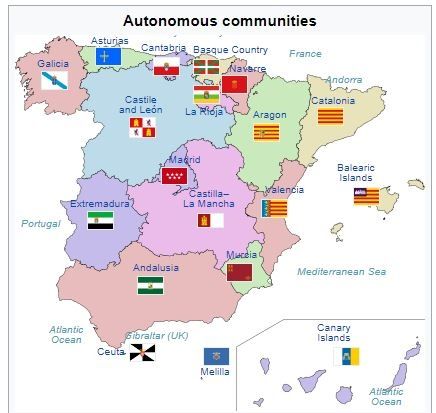Week Two as an Auxiliar
Two weeks in, and the name of the game is Wing It. The game is terrifyingly fun. You never know what might happen when you get to a class, and it’s stressful, but you come out of it a substantially better person. Being able to respond accordingly when a teacher is out sick, a student refuses to do the activity, or teach a 45 minute lesson on the fly all require spontaneity, patience, optimism, and persistence. I can’t imagine any job where having mastered these skills wouldn’t come in handy.
Week two at school included more of last week's introduction lesson (My First Week as an Auxiliar) and I got my schedule! I’m officially teaching English, Science, and Art classes! Look out Picasso, Malaga is about to be shaken up.
I thought teaching science would be overwhelming since it’s so technical. I also thought, "well, it's elementary school science, how hard could it be?". I was wrong in both ways. The textbooks are British and very technical, but I had also forgotten I love to learn. While I’m the “expert” on these subjects, I’m only learning the processes and vocabulary a few hours or days before them, and I’m really enjoying it.
So far in my different levels, we’ve covered plantlife, geography, landscapes, and aspects of Spain as a country. I can tell you our Prime Minister, draw our flag, map out our major mountain ranges, archipelagos, and seventeen comunidades autonomas (autonomous communities or regions). Next week I think we’re going to try and tackle la cincuenta provincias (50 provinces). United States geography and politics is a great comparison to Spain, because of our 50 states, and several regions.


On a more holistic note, week two brought me a really neat story of international cultural exchange. The other day in science class, we were plotting landscape vocabulary, and all of a sudden a girl’s tooth starts to fall out. Everyone was very concerned, and so the teacher and I tried to be lighthearted and talk about how at least she’ll get a visit from Ratoncito Perez.
Wait, what?
“Who is going to visit her tonight?”
“Ratoncito Perez...”
It turns out that in Spain, the Tooth Fairy is none other than a little rat who also puts money under pillows. I broke my serious Teacher Face and proceeded to freak out.
Look at him. He is so cute. There's even a crossover book where Ratoncito meets the Tooth Fairy. I might have to see if our library has a copy.
I was amazed, and launched right into an explanation about the Tooth Fairy, coupled with a rivalingly cute stick figure fairy. My students loved her, and it felt like one of those moments where you bridge a cultural divide, and become a more aware and homogenous world. I suppose it seems silly that a rat and a fairy picking up children’s teeth is what bridged a cultural divide, but it’s those little things that make us all feel connected isn’t it?
My final week two story is that I’ve noticed our school uses British textbooks and computer software of videos and audio files for vocabulary learning. Therefore, myself being from the good ole East Coast of the United States, when I go to spell or pronounce something, it’s sometimes not what they expect, or what they want to use, but that’s okay. Who growing up thought that British accents were cooler than American accents?...oh, right, everyone. Regardless, my pronunciation is getting much better. We should all take a day where we think about the letters that make up the words we're using. It’s quite the outer-body experience to speak one's native language as though it's new, but it proves how deeply rooted our regional accents can be. In my hometown we ignore a lot of consonants, so I'm glad to be rekindling those relationships.
MM